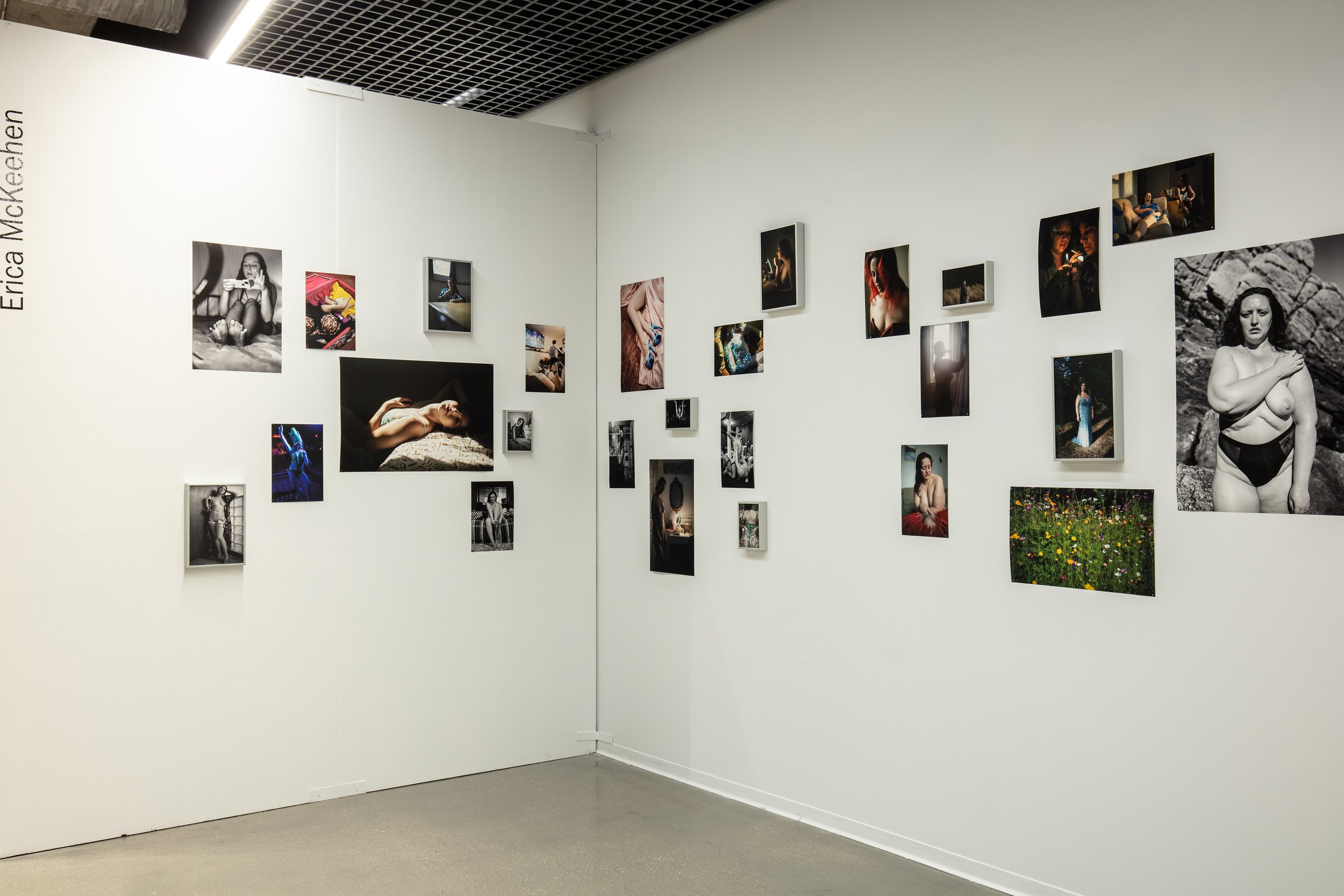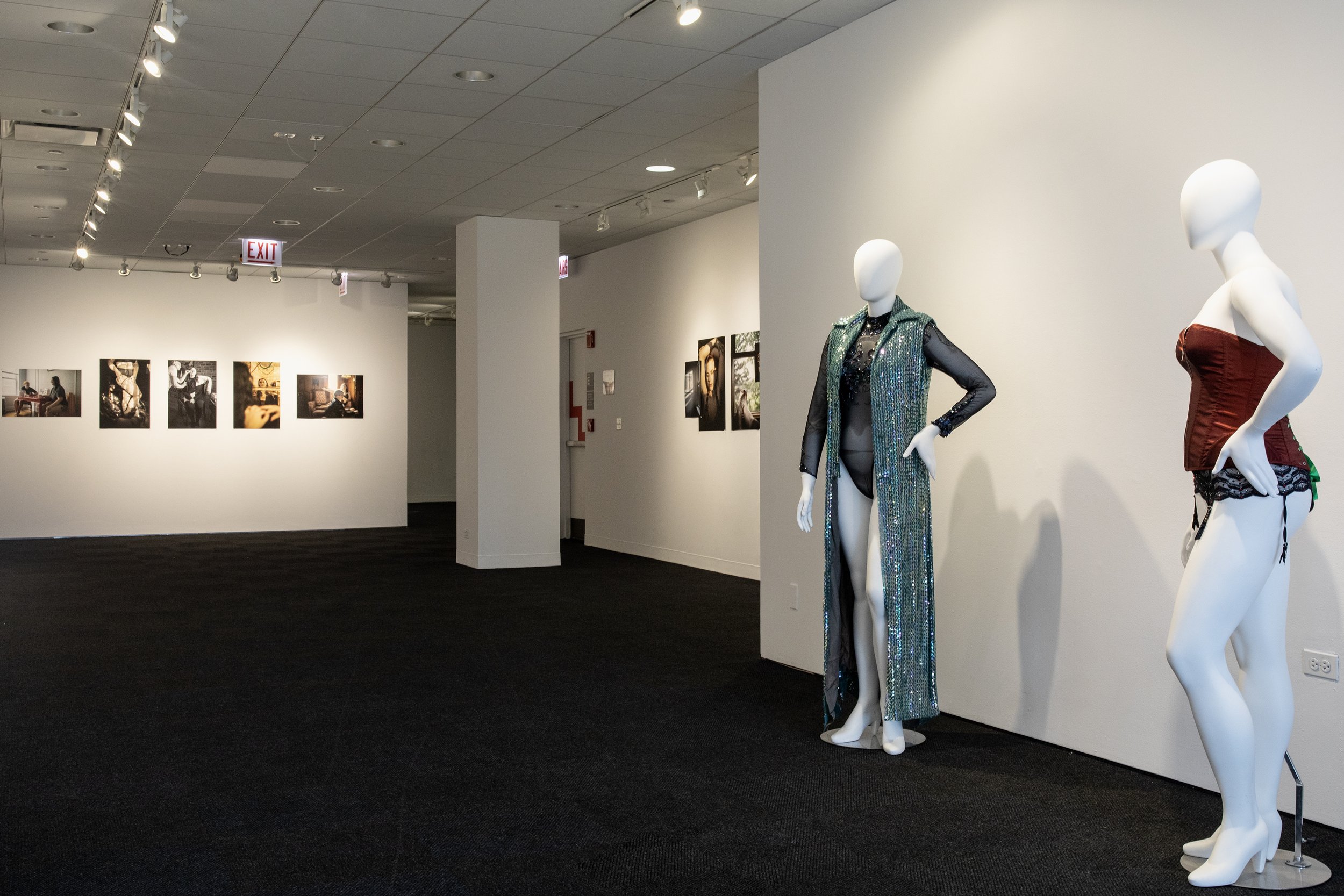Body Breeze Earth, May 6 - 20, 2023
Columbia College Chicago Student Center, 5th Floor
(images by Jonathan Castillo)
“Erica McKeehen was born in rural Ohio in 1987, during the Reagan administration and before the internet was accessible in most households. Common for many creative-types who are stuck in small towns, she immersed herself in art wherever she could find it — in movies, music videos, and magazines. McKeehen was most drawn to imagery of provocative women, such as Madonna and Marilyn Monroe, who proudly display their sexualities in front of the camera. Fast forward twenty-or-so years later and she is in graduate school studying photography, and still compelled by unapologetic women. But instead of admiring celebrities from the distance, she found herself in the audience of live burlesque performances.
Burlesque is a variety show comprised of acting, comedy, and striptease. The performers play with the power of suggestion, celebrating female sexuality as out in the open, but not up for grabs. This version of the artform dates back to the mid-19th century where performers then parodied popular theater or opera shows, mocking heroes like Shakespeare, while also foregoing the constrictive clothing of the era for more risqué skirts that put legs on full display. Burlesque changed over time and the striptease became a mainstay in the 1920s.
McKeehen was first introduced to burlesque soon after the election of Donald Trump, and the performance resonated with her as a powerful antidote for her fears of what the new presidential administration could mean for women’s rights. She began performing shortly after, and this part of her life naturally made its way into her visual art practice. McKeehen started creating a photographic index of fellow burlesque performers, and then dozens of images of one performer, Katina, who became her closest friend and muse.
In these images, we see Katina in the many locations that she inhabits or has inhabited — a Chicago apartment she shares with her husband, a flat on the southern coast of Spain, her childhood home in Michigan, the backstage rooms of venues. In each, we see an undeniable care between photographer and photographed. We sense the passing of time and know that McKeehen spent many hours waiting for the light to fall just right.
Over time, McKeehen realized she was tackling something bigger than documenting her friends and fellow performers. She found that her depictions added an important perspective that contrasts with most representations of sex workers. While digging through archives and art history textbooks, she found a trove of images of sex workers portrayed anonymously — fully nude except for a mask over their faces, or with their heads cropped entirely out of the images. These photographs leave little room for a viewer to form an empathetic connection. Alternatively, she found images of sex workers portrayed as victims living on the streets or in squalor, who appear to need someone to swoop in and save them. These photographs can perhaps create empathy in the viewer, but they also potentially equate sex work as an industry that is only a last choice. McKeehen firmly establishes her practice as counter to either of these extreme representations, and hopes to show us that sex work, like all professions, is complex.
She states: “I resist voyeurism and spectacle and instead explore creative camaraderie and community through nuanced views of femme experience, sexuality, and autonomy.” We see this nuance in images of Secret Mermaid, who is pictured playing video games or lounging at home, displayed alongside images of her text exchanges with clients about their sexual fantasies. McKeehen does not explain the difference in occupation between Secret and Katina, because she doesn’t feel like she should have to. She wants us to push against our own notions of what sex work should look like, and to see the stories she presents with fresh eyes: A person on the phone. A person holding hands with their partner. A person getting ready to go out at night. An occupation. An occupation of choice. An occupation of choice that can be profoundly feminist. These images remind us that if we can understand female sexuality as something joyful and not shameful, we can broaden our worldview beyond dominant patriarchal and puritanical standards. A powerful suggestion indeed.”
— Kristin Taylor
Museum of Contemporary Photography
Curator of Academic Programs and Collections
(Body Breeze Earth exhibition catalog essay, May 2023)
REVEAL, January 9 - March 21, 2023
The Arcade, Chicago, IL
Authoring Allure, March 4 - 19, 2022
The Martin, Chicago, IL










